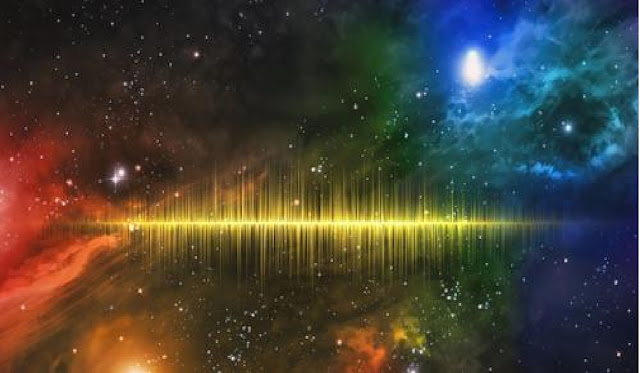Using a technique based on Einstein's theory of general relativity, astronomers have detected a radio signal from an even farther distance in space than ever before. This breakthrough could provide insight into the origins of the universe.
The discovery was made possible by using warped space-time as a lens, allowing the Giant Metrewave Radio Telescope (GMRT) in India to detect the most distant signal of its kind. The signal came from the galaxy SDSSJ0826+5630, which is located 8.8 billion light-years from Earth. This means the signal was emitted when the universe was only a third of its current age.
The signal detected by the GMRT is an emission line from neutral hydrogen, the universe's most primitive element. This element was present in the universe as a turbulent fog after the Big Bang and eventually gave rise to the formation of the first stars and galaxies. Astronomers have been searching for distant signals from neutral hydrogen for decades, hoping to pinpoint the moment the first stars began to shine. However, due to the vast distances involved, detecting these signals has been a significant challenge.
The recent discovery, published on December 23, 2022, in the Monthly Notices of the Royal Astronomical Society, reveals that gravitational lensing can assist astronomers in detecting evidence of neutral hydrogen. This effect occurs when the gravity of a massive object, such as a galaxy cluster, bends and magnifies the light from more distant objects, making them more visible to telescopes.
In conclusion, the detection of this radio signal using gravitational lensing represents a significant breakthrough in the field of astronomy. It provides a rare glimpse into the early stages of the universe's formation and could help answer some of the most fundamental questions about our existence.
According to Arnab Chakraborty, a cosmologist at McGill University in Canada and the lead author of the study, a galaxy emits various radio signals, but until now, it has only been possible to capture a particular signal from nearby galaxies. This limitation has restricted our understanding of those galaxies that are closer to Earth.
During the dark age of the universe, which occurred roughly 400,000 years after its inception, protons and electrons combined with neutrons to form neutral hydrogen. This element existed in the early cosmos before the formation of the first stars and galaxies. When stars eventually formed, their ultraviolet light ionized much of the hydrogen in the space surrounding them. Over time, some of the ionized atoms recombined into neutral hydrogen. Studying neutral hydrogen can provide insights into the early universe, including the lives of the first stars and the time before star formation.
However, detecting and studying neutral hydrogen poses a significant challenge, as its long-wavelength, low-intensity waves are often drowned out across vast cosmic distances. The characteristic wavelength of neutral hydrogen emissions is 21 centimeters, and the farthest 21 cm hydrogen signal detected until now was 4.4 billion light-years away.
To overcome this limitation, the researchers used gravitational lensing, a phenomenon predicted by Albert Einstein's theory of general relativity. Gravitational lensing occurs when a massive object sits between the telescopes and the signal source. In this case, the massive object was the galaxy SDSSJ0826+5630, which acted as a lens, magnifying the faint neutral hydrogen signal from twice the distance of the previous farthest detection.
Nirupam Roy, an associate professor of physics at the Indian Institute of Science and a co-author of the study, explained that the signal was bent by another galaxy between the target and the observer, resulting in a magnification of the signal by a factor of 30. This breakthrough will enable researchers to study hydrogen clouds that were previously inaccessible, improving the understanding of the universe in its various cosmological ages and potentially revealing the moment when the first stars began to shine.















No comments
Please do not enter any spam link in the comment box .